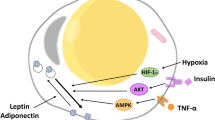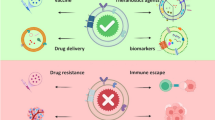Abstract
Cancer-associated antigens are not only a good marker for monitoring cancer progression but are also useful for molecular target therapy. In this study, we aimed to generate a monoclonal antibody that preferentially reacts with colorectal cancer cells relative to noncancerous gland cells. We prepared antigens composed of HT-29 colorectal cancer cell lysates that were adsorbed by antibodies to sodium butyrate-induced enterocytically differentiated HT-29 cells. Subsequently, we generated a monoclonal antibody, designated 12G5A, which reacted with HT-29 colon cancer cells, but not with sodium butyrate-induced differentiated HT-29 cells. Immunohistochemical staining revealed 12G5A immunoreactivity in all 73 colon cancer tissue specimens examined at various degrees, but little or no immunoreactivity in noncancerous gland cells. Notably, high 12G5A immunoreactivity, which was determined as more than 50% of colon cancer cells intensively stained with 12G5A antibody, exhibited significantly higher association with a poor overall survival rate of patients with colorectal cancer (P = 0.0196) and unfavorable progression-free survival rate of patients with colorectal cancer (P = 0.0418). Matrix-assisted laser desorption ionization time-of-flight mass spectrometry, si-RNA silencing analysis, enzymatic deglycosylation, and tunicamycin treatment revealed that 12G5A recognized the glycosylated epitope on annexin A2 protein. Our findings indicate that 12G5A identified a cancer-associated glycosylation epitope on annexin A2, whose expression was related to unfavorable colorectal cancer behavior.
Key message
• 12G5A monoclonal antibody recognized a colorectal cancer-associated epitope.
• 12G5A antibody recognized the N-linked glycosylation epitope on annexin A2.
• 12G5A immunoreactivity was related to unfavorable colorectal cancer behavior.





Similar content being viewed by others
References
Mármol I, Sánchez-de-Diego C, Pradilla Dieste A, Cerrada E, Rodriguez Yoldi MJ (2017) Colorectal carcinoma: a general overview and future perspectives in colorectal cancer. Int J Mol Sci 18:197
Valle L, Vilar E, Tavtigian SV, Stoffel EM (2019) Genetic predisposition to colorectal cancer: syndromes, genes, classification of genetic variants and implications for precision medicine. J Pathol 247:574–588
Ferreira JA, Magalhães A, Gomes J, Peixoto A, Gaiteiro C, Fernandes E, Santos LL, Reis CA (2014) Protein glycosylation in gastric and colorectal cancers: toward cancer detection and targeted therapeutics. Cancer Lett 355:176–183
Stowell SR, Ju T, Cummings RD (2015) Protein glycosylation in cancer. Annu Rev Pathol 10:473–510
Rasheduzzaman M, Kulasinghe A, Dolcetti R, Kenny L, Johnson NW, Kolarich D, Punyadeera C (2020) Protein glycosylation in head and neck cancers: from diagnosis to treatment. Biochim Biophys Acta Rev Cancer 1874:188422
Huet C, Sahuquillo-Merino C, Coudrier E, Louvard D (1987) Absorptive and mucus-secreting subclones isolated from a multipotent intestinal cell line (HT-29) provide new models for cell polarity and terminal differentiation. J Cell Biol 105:345–357
Barnard JA, Warwick G (1993) Butyrate rapidly induces growth inhibition and differentiation in HT-29 cells. Cell Growth Differ 4:495–501
Ogier-Denis E, Codogno P, Chantret I, Trugnan G (1988) The processing of asparagine-linked oligosaccharides in HT-29 cells is a function of their state of enterocytic differentiation. An accumulation of Man9,8-GlcNAc2-Asn species is indicative of an impaired N-glycan trimming in undifferentiated cells. J Biol Chem 263:6031–6037
Takeuchi T, Barcos MP, Seon BK (1991) Monoclonal antibody SN10 which shows a highly selective reactivity with human B leukemia-lymphoma and is effectively internalized into cells. Cancer Res 51:2985–2993
Köhler G, Milstein C (1975) Continuous cultures of fused cells secreting antibody of predefined specificity. Nature. 256:495–497
Takeuchi T, Misaki A, Liang SB, Tachibana A, Hayashi N, Sonobe H, Ohtsuki Y (2000) Expression of T-cadherin (CDH13, H-cadherin) in human brain and its characteristics as a negative growth regulator of epidermal growth factor in neuroblastoma cells. J Neurochem 74:1489–1497
Kawashima K, Saigo C, Kito Y, Hanamatsu Y, Egawa Y, Takeuchi T (2019) CD151 confers metastatic potential to clear cell sarcoma of the soft tissue in animal model. Oncol Lett 17:4811–4818
Weiser MR (2018) AJCC 8th edition: colorectal Cancer. Ann Surg Oncol 25:1454–1455
Arabiki M, Shimada Y, Nakano M, Tanaka K, Oyanagi H, Nakano M, Ling Y, Okuda S, Takii Y, Wakai T (2020) Verification of the Japanese staging system for rectal cancer, focusing on differences with the TNM classification. Surg Today 50(11):1443–1451
Towbin H, Staehelin T, Gordon J (1979) Electrophoretic transfer of proteins from polyacrylamide gels to nitrocellulose sheets: procedure and some applications. Proc Natl Acad Sci U S A 76:4350–4354
Bunai K, Okubo H, Hano K, Inoue K, Kito Y, Saigo C, Shibata T, Takeuchi T (2018) TMEM207 hinders the tumor suppressor function of WWOX in oral squamous cell carcinoma. J Cell Mol Med 22:1026–1033
Takeuchi T, Kobayashi M, Moriki T, Miyoshi I (1988) Application of a monoclonal antibody for the detection of trichosporon beigelii in paraffin-embedded tissue sections. J Pathol 156:23–27
Fernandez J, Gharahdaghi F, Mische SM (1998) Routine identification of proteins from sodium dodecyl sulfate-polyacrylamide gel electrophoresis (SDS-PAGE) gels or polyvinyl difluoride membranes using matrix assisted laser desorption/ionization-time of flight-mass spectrometry (MALDI-TOF-MS). Electrophoresis. 19:1036–1045
Inoue K, Hatano K, Hanamatsu Y, Saigo C, KIto Y, Bunai K, Shibata T, Takeuchi T (2019) Pathobiological role of cleft palate transmembrane protein 1 family proteins in oral squamous cell carcinoma. J Cancer Res Clin Oncol 145:851–859
Livak KJ, Schmittgen TD (2001) Analysis of relative gene expression data using real-time quantitative PCR and the 2(-delta delta C(T)) method. Methods. 25:402–408
Gustafsson OJ, Briggs MT, Condina MR, Winderbaum LJ, Pelzing M, McColl SR, Everest-Dass AV, Packer NH, Hoffmann P (2015) MALDI imaging mass spectrometry of N-linked glycans on formalin-fixed paraffin-embedded murine kidney. Anal Bioanal Chem 407:2127–2139
Guzmán-Aránguez A, Olmo N, Turnay J, Lecona E, Pérez-Ramos P, López de Silanes I, Lizarbe MA (2005) Differentiation of human colon adenocarcinoma cells alters the expression and intracellular localization of annexins A1, A2, and A5. J Cell Biochem 94:178–193
Sarafian T, Pradel LA, Henry JP, Aunis D, Bader MF (1991) The participation of annexin II (calpactin I) in calcium-evoked exocytosis requires protein kinase C. J Cell Biol 114:1135–1147
Means N, Gorvel JP, Walter C, Gerke V, Kellner R, Griffiths G, Gruenberg J (1993) Annexin II is a major component of fusogenic endosomal vesicles. J Cell Biol 120:1357–1369
Babiychuk EB, Draeger A (2000) Annexins in cell membrane dynamics: Ca2+-regulated association of lipid microdomains. J Cell Biol 150:1113–1124
Aukrust I, Rosenberg LA, Ankerud MM (2017) Post-translational modifications of Annexin A2 are linked to its association with perinuclear nonpolysomal mRNP complexes. FEBS Open Bio 7:160–173
Emoto K, Yamada Y, Sawada H, Fujimoto H, Ueno M, Takayama T, Kamada K, Naito A, Hirao S, Nakajima Y (2001) Annexin II overexpression correlates with stromal tenascin-C overexpression: a prognostic marker in colorectal carcinoma. Cancer 92:1419–1426
Rocha MR, Barcellos-de-Souza P, Sousa-Squiavinato ACM, Fernandes PV, de Oliveira IM, Boroni M, Morgado-Diaz JA (2018) Annexin A2 overexpression associates with colorectal cancer invasiveness and TGF-ß induced epithelial mesenchymal transition via Src/ANXA2/STAT3. Sci Rep 8:11285
Cua S, Tan HL, Fong WJ, Chin A, Lau A, Ding V, Song Z, Yang Y, Choo A (2018) Targeting of embryonic annexin A2 expressed on ovarian and breast cancer by the novel monoclonal antibody 2448. Oncotarget 9:13206–13221
Patchell BJ, Wojcik KR, Yang TL, White SR, Dorscheid DR (2007) Glycosylation and annexin II cell surface translocation mediate airway epithelial wound repair. Am J Phys Lung Cell Mol Phys 293:L354–L363
Shetty P, Bargale A, Patil BR, Mohan R, Dinesh US, Vishwanatha JK, Gai PB, Patil VS, Amsavardani TS (2016) Cell surface interaction of annexin A2 and galectin-3 modulates epidermal growth factor receptor signaling in Her-2 negative breast cancer cells. Mol Cell Biochem 411:221–233
Chao PZ, Hsieh MS, Cheng CW, Hsu TJ, Lin YT, Lai CH, Liao CC, Chen WY, Leung TK, Lee FP, Lin YF, Chen CH (2015) Dendritic cells respond to nasopharyngeal carcinoma cells through annexin A2-recognizing DC-SIGN. Oncotarget 6:159–170
Phueaouan T, Chaiyawat P, Netsirisawan P, Chokchaichamnankit D, Punyarit P, Srisomsap C, Svasti J, Champattanachai V (2013) Aberrant O-GlcNAc-modified proteins expressed in primary colorectal cancer. Oncol Rep 30(6):2929–2936
Availability of data and materials
The datasets used during the present study are available from the corresponding author upon reasonable request.
Funding
This study was supported by grants from the Ministry of Education of Japan (Grant nos. KAKEN 20 K07406).
Author information
Authors and Affiliations
Contributions
Kazuhiro Yoshida and Tamotsu Takeuchi participated in the design of the study, data interpretation, and manuscript drafting. Hideharu Tanaka, Chiemi Saigo, Yoshinori Iwata, Itaru Yasufuku, and Yusuke Kito performed the experiments. All authors read and approved the manuscript and agree to be accountable for all aspects of the research in ensuring that the accuracy or integrity of any part of the work is appropriately investigated and resolved.
Corresponding author
Ethics declarations
Ethics approval
After receiving approval from the Institutional Review Board of the Gifu University Graduate School of Medicine (specific approval numbers: 2019–202 and 2019–0444) to carry out our retrospective study, we collected 55 specimens from surgically treated patients who were primarily diagnosed with colorectal cancer. Informed consent was obtained from all participants or their authorized representatives. This study was conducted in accordance with the ethical standards outlined in the Declaration of Helsinki, 1975.
The experimental protocol to obtain the antibodies was approved by the Animal Care Committee of Gifu University (specific approval number: H30–32).
Consent for publication
Not applicable.
Competing interests
The authors declare no competing interests.
Additional information
Publisher’s note
Springer Nature remains neutral with regard to jurisdictional claims in published maps and institutional affiliations.
Supplementary information
Fig. S1
Immunofluorescence staining results demonstrating a greater reaction of 12G5A antibody with HT-29 colon cancer cells than with sodium butyrate-induced HT-29 cells. a and b HT-29 cells were cultured without (a) or with (b) 1-mM sodium butyrate. Cells were fixed with 4% (m/v) paraformaldehyde, permeabilized with 0.1% Triton X-100, and blocked with 10% goat serum. The cells were then incubated with 12G5A-cultured supernatant and then with Alexa Fluor 488-conjugated anti-mouse antibody. Images were acquired using a confocal laser scanning microscope (Leica TCS SP8, Germany). 12G5A immunoreactivity was visualized with green fluorescence, and the nucleus was stained using DAPI. Scale bar represents 20 μm. c Simultaneously, alkaline phosphatase activity was measured to monitor the enterocyte differentiation of HT-29 cells using p-nitrophenyl phosphate as substrate in triplicate. Alkaline phosphatase activity was enhanced by sodium butyrate. The mean and standard deviation of absorbance at 405 nm are shown. (PNG 152 kb)
Fig. S2
Little or no 12G5A immunoreactivity was found in normal colon tissue microarray. Representative immunohistochemical staining of two human normal colorectal tissues using 12G5A antibody is shown. We obtained similar staining in 22 other normal microarray colorectal tissues. Scale bar represents 100 μm. (PNG 175 kb)
Fig. S3
Immunoaffinity extraction of 12G5A antigen from SW480 cells. Approximately, 100-, 40-, and 30-kDa protein bands were observed after Coomassie brilliant blue staining (lane 12G5A). Significant protein bands were not obtained using the control murine IgM-binding M-270 epoxy magnetic beads (lane Mock). Each protein band was cut and analyzed by peptide mass fingerprinting using a MALDI-TOF assay. Interestingly, an approximately 40-kDa protein appeared to be human annexin A2 with a significant Mowse score, while the other two protein bands could not be identified with a sufficient Mowse score. Immunoblotting on the immunoprecipitation specimens indicated that a commercially available antibody to annexin A2 reacted with the 40-kDa protein, but not with the specimens of isotype control immunoprecipitants. (PNG 307 kb)
Fig. S4
siRNA-mediated silencing of annexin A2 gene in SW480 cells. Both the siRNAs, s1383 and s9548 (indicated as 2 and 3, respectively), successfully downregulated annexin A2 expression at the mRNA (a) and protein (b) levels compared to control siRNA-treated SW480 cells (indicated as 1). The relative expression rate based on that of the control siRNA-treated group was 0.107 ± 0.015 and 0.05 ± 0.01 in siRNA s1383 and s9548-treated SW480 cells, respectively (a). Note that there was little or no annexin A2 green protein band in siRNA-treated cells. Red bands indicate GAPDH protein loading in each lane (b) (PNG 103 kb)
ESM 5
(PNG 1335 kb)
Rights and permissions
About this article
Cite this article
Tanaka, H., Saigo, C., Iwata, Y. et al. Human colorectal cancer-associated carbohydrate antigen on annexin A2 protein. J Mol Med 99, 1115–1123 (2021). https://doi.org/10.1007/s00109-021-02077-z
Received:
Revised:
Accepted:
Published:
Issue Date:
DOI: https://doi.org/10.1007/s00109-021-02077-z




